We are a photograph-crazy family. Indeed we are so mad about clicking them and keeping them for posterity that I (like my brother, father, and his father before him) have gotten into fights over taking photos. Every time we have a family function or a get-together, we had a wedding or birthday, we travel or attend parties, I (like Baba in his days) used to be the only one insisting that we first take photographs and then commence festivities (the same photographs everyone would be pleading with me to take copies of and share with them the next day).
This was, of course, before social media and before everyone got a camera in their pockets and everyone wanted to click a million selfies and everyone wanted to share every little detail of their lives online. Nothing wrong with it. In fact, it only vindicates my grandfather, my father, my brother, my grandfather, and of course, me, all of whom have been at it for the past 100-odd years.
How crazy are we for clicking photos? The photograph below displays the minutest part of our total photo collection and is a random sampling, not arranged or specifically kept in this way at all. And what do you see? Three, yes three, photographs of a tv set. Not one, not two, three. Of a television. When it is off. With nothing on the screen. Clicked, printed, and properly stored for posterity.

There are literally 3 photos of the same tv set there.
To give you a rough idea of how much we love photographs, let me confess that I have 8 military-style steel trunks (and I realised, a few cardboard boxes and a couple of Delseys too) full of these, including negatives, slides (the ones you need a magnifier/viewer for), OHP prints, regular paper prints, and photo paper prints, in various sizes ranging from stamp sized to passport-sized to 5×6 to 8×10 to 12×18, in black & white and colour, some in frames, most in albums, some in plastic folders, some in covers, and bunches of them just stacked together and stuffed in plastic and cloth bags. These range from my grandfather’s time (yes, even in his childhood in the early 20th century, they clicked a lot of them as compared to most other people in that era) to my parents’, moving on to Abhijit and mine, and then onwards.
I would also like to state that these 10s of 1,000s of photographs are what was left AFTER my parents sat down a few years ago and threw out 10s of 1,000s more of them already. So, you can imagine the obsession and how it has manifested itself into this humungous task of opening every box, extracting the album, checking to see if any of the photographs are worth keeping, discarding the rest (separating plastic from paper and keeping segregated piles to deliver to Swachh, an NGO in Pune that recycles garbage), restacking the ones I want to keep, packing them, and then finding storage space in this huge 3BHK home that has already started to seem small for the two of us and our memories.
That said, most of my photographs post-2003, and all of the post-2007 are online and that probably means I saved another 20-odd-trunk-fulls. How do I know? Because I have over 60,000 photos sorted in 344 albums on Google Photos, all of them in their original form, since I refuse to reduce their resolution, even if it means I am paying for 2TB of space while most people I know are quite satisfied with the 15GB free space Google provides them. This is, I must confess, apart from over 73,000 conversations on Gmail and a full 500GB+ of other data on Dropbox (where I pay for 2TB separately).



So, why am I telling you this? Because I had an epiphany while sorting these photographs out.
You see, when we click and later view these photos we take, we seem to mentally compartmentalise them into those we’d like to keep and the ones we wouldn’t. In fact, some of the latter we are even embarrassed about and would rather prefer no one saw them and made us the butt of jokes. We’d wish they didn’t exist. That is how ashamed we are of ourselves in them. These are the ones we feel we would discard first when it comes to sorting through things.
Where’s the problem, then? It is this: in deciding which ones are ‘keepworthy’, our gut instincts are almost always wrong.
I have thousands of photographs, some of them frame-worthy (or, as we would call them in those days: postcard-like), of monuments and mountains, airports and railways stations, aircraft and high-end cars, in short, of objects and scenes, that at the point of clicking (and later, developing, as was essential to be able to see them in the days of photo film), were seen as beautiful and perhaps worth saving in albums and viewing again and again over the years. These photos were the ones that were circulated between guests and relatives when Baba came back from his flights around the world. Some of them have celebrities, politicians (Sharad Pawar, George Fernandes, Vajpayee, Indira Gandhi, Rajiv Gandhi, various Presidents like APJ Kalam, Narayanan, SD Sharma, Zail Singh, even Bill Clinton, etc.), sportspeople (mainly cricketers, and surprisingly, women cricketers too, especially from the 2002 team that went to the UK), cosmonauts (yes, I have several of Rakesh Sharma and the Soviet team that he went up with, one of them even signed with my name), actors & performers (Amitabh, Lata, Asha, Rekha, Madhuri, Aamir, Govinda, Nana Patekar, etc.), writers (Ruskin Bond, Vikram Seth, Salman Rushdie), industrialists (JRD, Ratan Tata, Aditya Birla, Vijaypat Singhania, Dhirubhai Ambani, Kirloskar, etc.; they weren’t called ‘entrepreneurs’ then), and other rich and famous people (several Soviet politicians, one or two SAARC politicians, Chinese ones too, some newspaper editors, I think I recognised Padgaonkar in one, and so on) with my father or mother posing with them. Some of these have Mt Fuji and the Ginza district, some have downtown NYC, some the Thames and the Westminster in them, some are of the Great Wall of China, some pre-Chinese Hong Kong (with the risky runway at the old airport), some South Africa (his was the first Indian commercial flight to land after apartheid), some from down under, some of Bangkok and some from other exotic locations from around the world. Then, there are the ones with various beaches and mountains, jungles and deserts, signs and signages, temples and places of worship, some of just roads and buildings, and some even more confusing in the sense that I wouldn’t have a clue what it is in the photo, where it was taken, and why. These photos, once seen (and shown off), were neatly tucked away in albums and then into almirahs and showcases, where they stayed until I discovered them, having made their journey from the farmhouse to my new home in steel trunks. Let us call these Exhibit A.
Then, there are the ones with people in them. These people are doing important things like inaugurating a new home or attending a naming ceremony or wedding, or receiving an award, or making a speech, or being and doing something that is worth recording for history, on occasions that would later have anniversaries and events marked in the calendar to remember and, perhaps, celebrate. Most of these are stiff, posed, and kind of awkward in the smiles and posture. But the lighting is perfect, the composition correct, and the occasion, photo-worthy. Let us call these Exhibit B.
And then, there are the photos that have people I love. Doing almost nothing. Or at least nothing important. Just mundane things like sitting around, relaxing, singing, partying, dancing, talking, pointing, posing, cooking, studying, driving, running somewhere, playing (a board game or something more athletic), standing at the door (either about to leave or having just returned from somewhere), making faces, and so on. The kind of things which, while being photographed, we knew we were wasting film, but did it anyway. The kind that once printed, we saw once, laughed at the memory, and immediately forgot about it. These are blurry, badly composed, hastily clicked, and have this fly-on-the-wall, candid quality about them. These were never put in neat albums, nor taken out when guests arrived, nor passed around, nor even remembered once they were kept at the back of the almirah or somewhere no one saw. if you had asked any of us then, we’d have discarded these first. Let us call them Exhibit C.
Now, what was my epiphany? That, while sorting these out, I realised that while I can find a million photographs of the Eiffel Tower or of Mt Kilimanjaro better than the ones I have in Exhibit A, and I might even be able to find the ones in Exhibit B, with Maa giving an interview to the press or of Atal Bihari Vajpayee shaking hands with the crew of his aircraft in the news clippings somewhere, the ones in Exhibit C are the only ones I want to keep. Because they have a context. Because they are unique in capturing the slice of time at which that moment existed. Because they are irreplaceable. Because they do the job of actually triggering happy thoughts as compared to the other two kinds. Because they are one of a kind. Because they can transport me back to that particular place and time and I can stand transfixed at the sight of, as in this particular photograph, my parents looking into each others’ eyes, in love, slightly tipsy, happy, and enjoying the moment as my mom, that beautiful woman in that gorgeous silk saree (and wearing a flower in her tightly tied, thick bun) smelling like a dream (I still remember how Maa would smell when they’d go partying; she’d wear ‘Poison’ by Dior) lets her hair down and her husband, the slightly shy, dashing young man in the suit with two left feet, tries hard to keep up and impress her back in 1984 at his farewell party from Communication Squadron, IAF as they prepare to join Air India and a start a fresh life together the next day.
How stupid of us to think that this was worth throwing away!

Wg Cdr and Mrs Gadgil at their farewell from the IAF, December 1984.



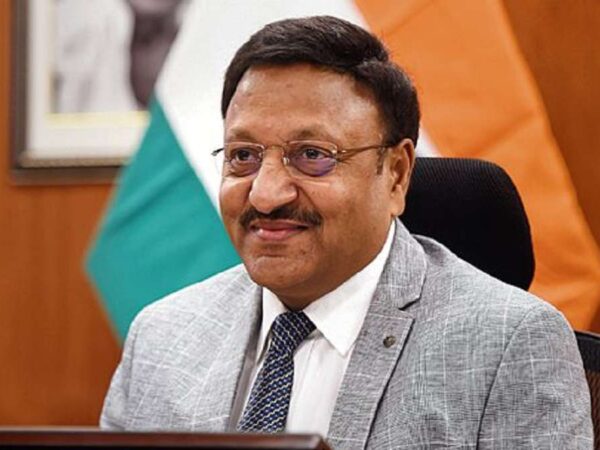
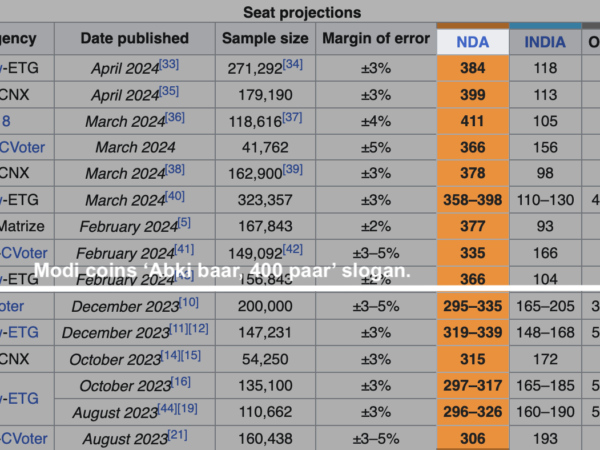
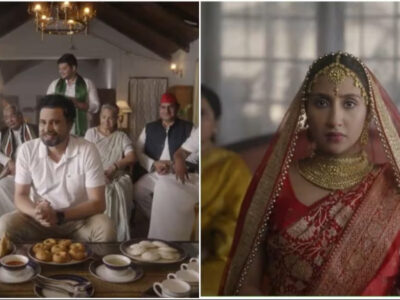
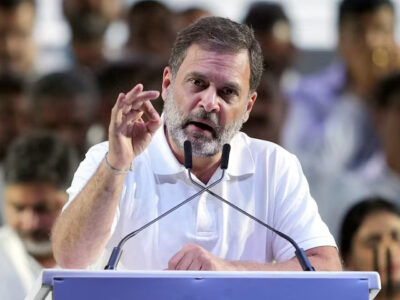
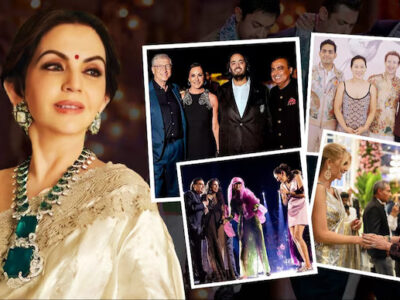






![Mr Baba: 'Would you like to take off the backpack now that you've been downstairs for like 30 minutes?'
Ms Kym-Kym: 'I like it like this. You should try it. It's very comfortable.'
Mr Baba: [Pulling on his backpack] 'Hmmm, you're right. That's rather snug.'
Ms Kym-Kym: 'Twinning! Yay!'
#LuckiestManAlive #BearFamily](https://scontent-lax3-1.cdninstagram.com/v/t51.29350-15/416920031_3373151642830342_6696851954454537274_n.webp?stp=dst-jpg&_nc_cat=105&ccb=1-7&_nc_sid=18de74&_nc_ohc=ZMLmjPdSAEUAX8nnJex&_nc_ht=scontent-lax3-1.cdninstagram.com&edm=ANo9K5cEAAAA&oh=00_AfB0olvUVmnenPKd2wCllMDehg5gzDgAbc4BDsGLqIm6pA&oe=65BA4561)

![Kym: 'Mr Baba, can I tell you something wierd? You can actually get tired from doing nothing!!'
Me: 'It is called boredom.'
Kym: 'Noooo. I mean, like physically tired.'
Me: 'One can get tired and sleepy due to boredom. I remember reading about it somewhere. Let's find out.'
[Some Googling later]
Me: 'It says here that "A new paper published in the journal Nature Communications finds that a part of the brain that is associated with motivation and pleasure - the nucleus accumbens - also can produce sleep. The new findings may explain why we have the tendency to fall asleep in the absence of motivating stimuli, i.e., when bored." Isnt it interesting?'
Kym: 'I already knew that. Why do you need to research things we already know?'
Me: [Finding a subject worth talking about now]: ' Ah well, that's what we'll talk of tomorrow on your morning run. It's very interesting the way science is done and our understanding of the universe is expanded.'
Kym: 'Can we talk of unicorns instead?'
Me: 'Sure. How do you know they exist? That's an interesting question too that you can use the scientific method to answer.'
Kym: 'Do they have to exist for us to talk about them? We can just pretend they do for an hour and have fun.'
Me: [Laughing] 'Yes, sure. We can do that too.'
#BabaBabyConversations #BearFamily #KymAndI](https://scontent-lax3-1.cdninstagram.com/v/t51.29350-15/416410840_383105434396466_2267910263456009774_n.webp?stp=dst-jpg&_nc_cat=104&ccb=1-7&_nc_sid=18de74&_nc_ohc=LIozs445JFcAX_48wGC&_nc_ht=scontent-lax3-1.cdninstagram.com&edm=ANo9K5cEAAAA&oh=00_AfDQ2qbb0yO_wUmLj_L0ZxF61eDdwlIN-vyrd8GZe_pBMQ&oe=65BAFA57)










